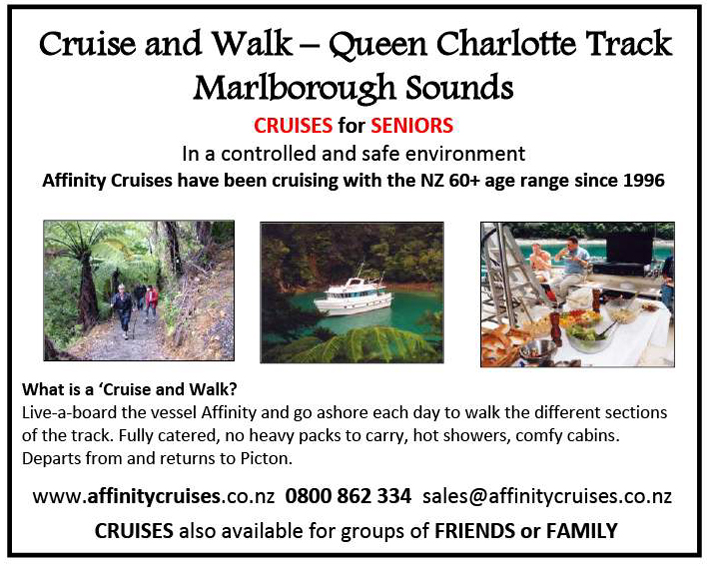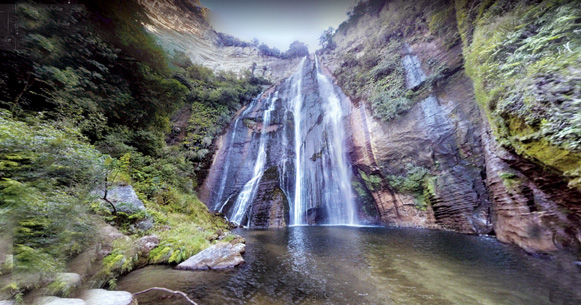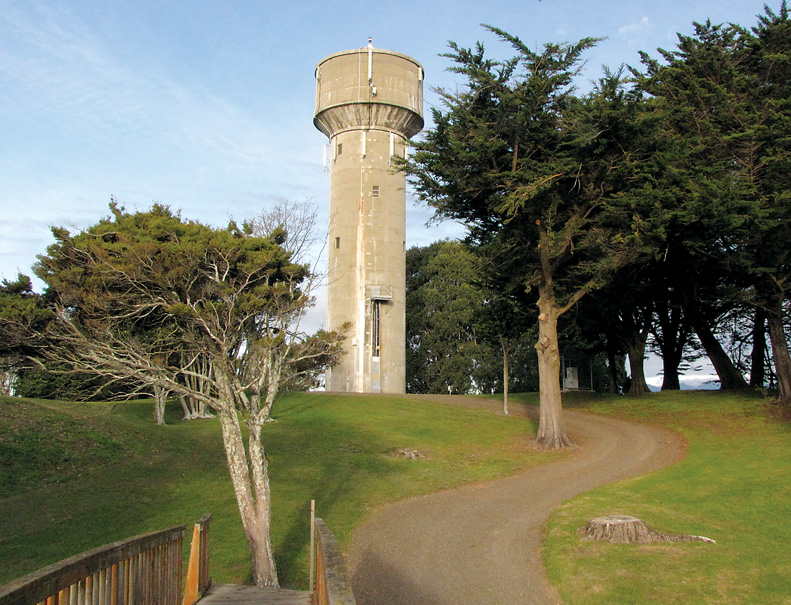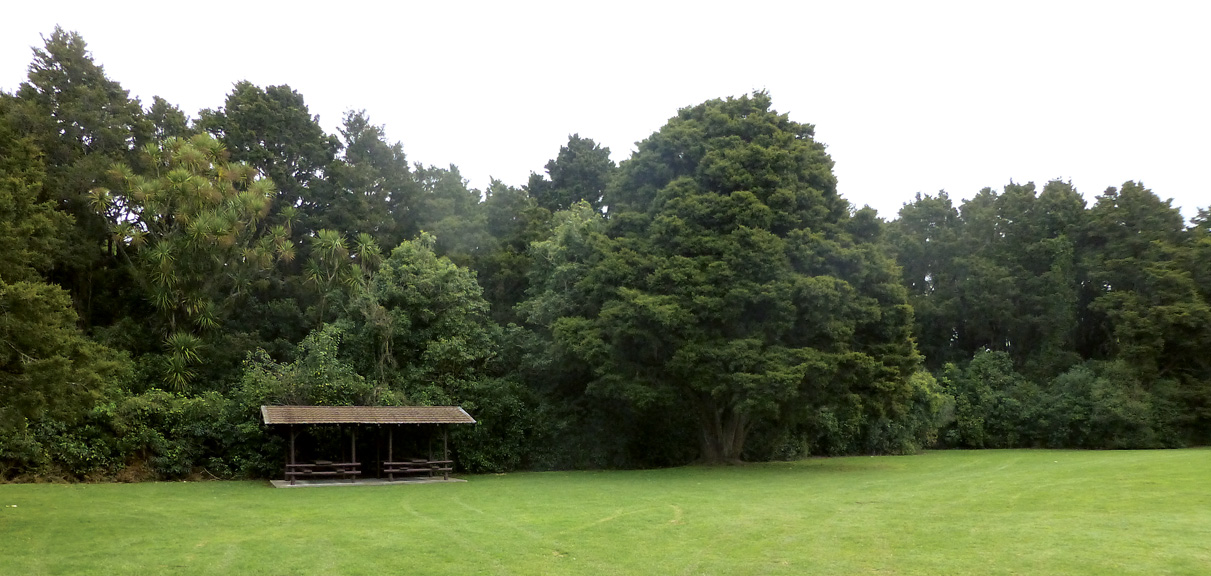
Queen Charlotte Track . . . Here we come!
By Juliet Gibbons
We’re all going on a summer holiday
No more working for a week or two.
Fun and laughter on our summer holiday,
No more worries for me or you,
For a week or two.
We’re going where the sun shines brightly
We’re going where the sea is blue.
We’ve all seen it on the movies,
Now let’s see if it’s true.
They say that a change is as good as a holiday and if COVID-19 has taught us anything at all, it’s that change can remind us of what is important in life. Family, friends, good times, fun in the sun and laughter. And, of course, the importance of being kind.
The operators behind the Queen Charlotte Track in the Marlborough Sounds know something about most of these things, fun in the sun being one of them! Located in one of the sunniest regions in New Zealand, the great summer climate is one of the attractions they are keen to encourage New Zealanders to come and experience for themselves this coming summer.
There’s also history here too. The Queen Charlotte Track offers a spectacular 72km hike from the historic Meretoto/Ship Cove through to picturesque Anakiwa. Ship Cove is a place that features high on the list of most iconic historic places for New Zealanders to visit as it was here the first sustained contact between the New Zealand Maori and the European took place.
This came to national prominence earlier this year as New Zealand commemorated 250 years since the arrival of Captain James Cook in what became the precursor to European settlement in New Zealand.
Meretoto/Ship Cove was the epicentre of English navigator Captain James Cook’s explorations in the South Pacific – a snug cove in the outer Queen Charlotte Sound where he replenished water supplies, rested his men and repaired his ships on five different visits between 1770 and 1777. British sovereignty was first proclaimed by Cook over the South Island when the British flag was formally raised on the summit of Motuara Island, opposite Ship Cove, on 31st January 1770.
As well as its historical connections, the Queen Charlotte Track is a truly unique New Zealand walk due to its variety of landscapes as the well-defined track passes through lush coastal forest, meanders around tranquil bays and traverses skyline ridges affording unsurpassed views of the Queen Charlotte and Kenepuru Sounds.
The terrain is regarded as undulating with hills ranging from sea level to just over 400 metres and most of the track is wide and benched which makes for a pleasant stroll. The trail crosses a mixture of public and private land, a unique partnership between the Department of Conservation, QCTLC (Queen Charlotte Track Land Co-operative) and Marlborough District Council, and visitors are required to have purchased the appropriate pass if crossing the private land sections.
You will find real New Zealand here – where friendly locals welcome you to their door, your bags are transferred each day and the access is easy while you adventure. This is a walking track where you can create memories in your own style and at a budget that suits your wallet.
The track can be walked year-round thanks to that great Marlborough Sounds’ climate with the most popular season being from November to May. It is also a popular trail for mountain bikers with some sections open all year to enjoy. The majority of visitors access the track by boat from the port of Picton but day walks are available where the road meets the track such as at Anakiwa, Torea Bay and Te Mahia Saddle.
You can camp at Department of Conservation campsites, private campsites and farm stays, or opt for accommodation in backpackers, home stays, bed and breakfasts, retreats and lodges or hotels along the way all while taking advantage of the water transport services which allow your luggage to be transferred each day.
Cook for yourself or take the night off, if staying at or near accommodation with restaurants. Many of the smaller lodges offer catering options too.
For those with a little more time, or seeking something a little different, there are many other activities that can be enjoyed along the way. These include swimming, fishing, sailing, sea kayaking, bird and dolphin watching, diving and historic side trips. Glow-worm grottos add to the nightlife.
There are guided and unguided packaged walking options available too and both can have their packs carried for them from any of the access points along the track by arrangement with transport operators. The sheer pleasure of arriving or departing the track by sea adds to the experience and with its historic interest and many comfortable accommodation houses along the way serving good food and wine, it could easily be called the ‘gourmet’s trail’.
Come and experience the breathtaking ridge top panoramas of Queen Charlotte and Kenepuru Sounds and enjoy the company of friendly hosts and superb food and wine. For more information on how to book your ‘summer holiday’ see the official track website at www.qctrack.co.nz
The Queen Charlotte Track – Why Walk When You Can Ride?
The Queen Charlotte Track is one of New Zealand’s best-loved walking trails, but it is also a popular destination for mountain bikers as one of New Zealand’s Great Rides on the Ngā Haerenga New Zealand Cycle Trail.
It offers a unique combination of beautiful coastal scenery, native bush, stunning views and New Zealand history. The natural appeals are complimented by easy access, an outstanding choice of hosted accommodation, pack transfers and a wide variety of flexible options for day or multiday trips, including all-inclusive packages from local providers. It offers bikers an exhilarating and challenging experience over 72km and is able to be biked comfortably in three days.
The Queen Charlotte Track has long been regarded as one of the best single tracks in the country. The track is graded as advanced/grade 4 for mountain biking although some sections are easier than others and lend themselves to day rides for those not wanting to attempt the entire track. The demographic of those riding the track is also changing as biking grows in popularity amongst older age groups.
Most riders will find some sections of the track easier to walk and you will likely need to push your bike in certain parts. If you are fit and experienced at mountain biking, most of the track is very rideable, albeit steep and challenging in certain sections, especially when rain has rendered it slippery and muddy. Less experienced riders may prefer to avoid the ridge-top sections of the central part of the track by riding along Kenepuru Road between Kenepuru Saddle and Portage Bay, still enjoying wonderful Sounds views.
The Marlborough Sounds is an iconic New Zealand destination – an intricate land mass, making up one fifth of New Zealand’s coastline, of numerous bays and coves caused by the drowning of river valleys by rising oceans over the past 10,000 years.
It is through this awe-inspiring landscape bikers can test themselves against a trail which takes them from shoreline to skyline, through magnificent virgin native forest at the track’s start at Meretoto/Ship Cove as well as regenerating forest and farmland along the rest of its length. Mountain biking is one of the best ways to explore this stunning area and learn about its fascinating history.
Although challenging in parts, the Queen Charlotte Track experience is made all the easier with the thought of comfortable lodgings awaiting each evening from backpackers through to lodges and even hotels. And the best part is your pack is transferred for you between your night time stays, by one of the water transport operators, so all you have to do is ride.
Important Footnote: You can bike the whole track from Ship Cove to Anakiwa between 1 March and 30 November each year. From 1 December to the end of February, the track is open for mountain biking between Kenepuru Saddle and Anakiwa. As the track is a shared use track and popular with walkers, you will need to ride in control and be prepared for walkers around each corner. Riding in the same direction as most others, from Ship Cove to Anakiwa is advised. For more information visit www.qctrack.co.nz
Walking the Talk
Queen Charlotte Track Inc. has championed the virtues of the Queen Charlotte Track since 1993 and COVID-19 is a challenge the organisation is ready to meet and overcome.
Chairman Rob Burn is set to ‘walk the talk’ of supporting local when he and his wife Carolyn retrace the steps she last walked 25 years ago, completing most of the Queen Charlotte Track this winter.
“I have promised Carolyn a walk on the Queen Charlotte Track the first chance we get, seeing our own backyard, especially with our Autumn weather still good,” he says.
“Most of our operator members have not had an easy time over the last few months and without international flights our tourism businesses will likely just be welcoming our fellow Kiwis who we hope will explore our local offerings to get us through this coming Winter and Summer,” he says.
Rob and his wider committee are motivated to ensure New Zealanders are aware of the wonderful experience the Queen Charlotte Track offers.
“Our other ray of sunshine could be the ‘Trans-Tasman Bubble’ concept being worked on now. We all know our Aussie cousins and expat Kiwis love to walk, cycle, eat and drink and that is what the Queen Charlotte Track can offer in abundance,” he says.
So fellow New Zealanders, there has never been a better time to follow in Rob’s footsteps, to support local New Zealand walking trails like the Queen Charlotte Track and venture out into your big backyard.
What are you waiting for New Zealand?















































